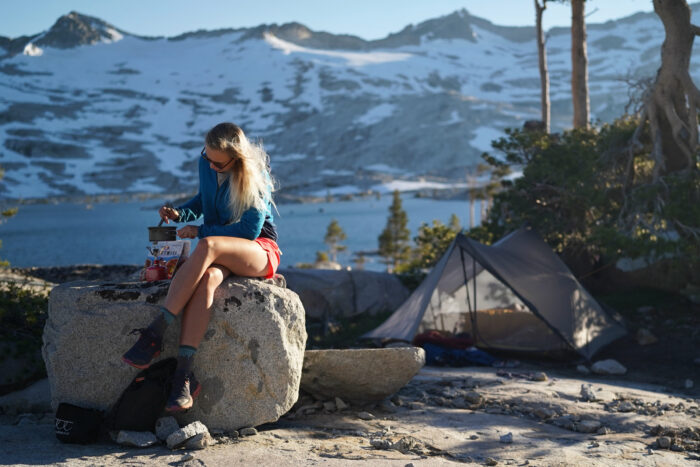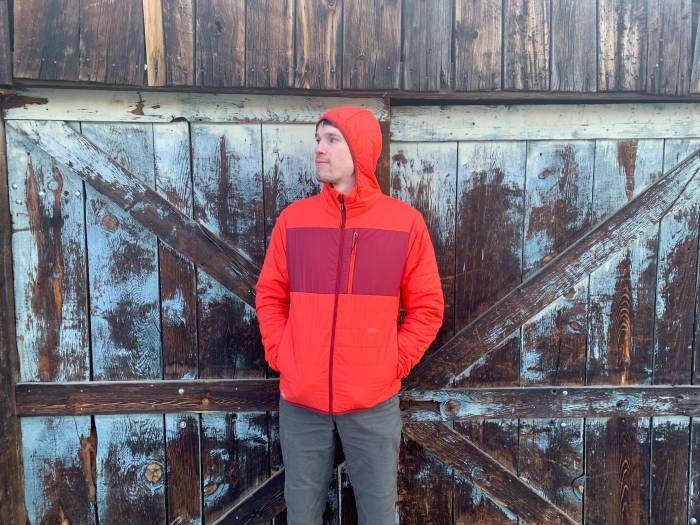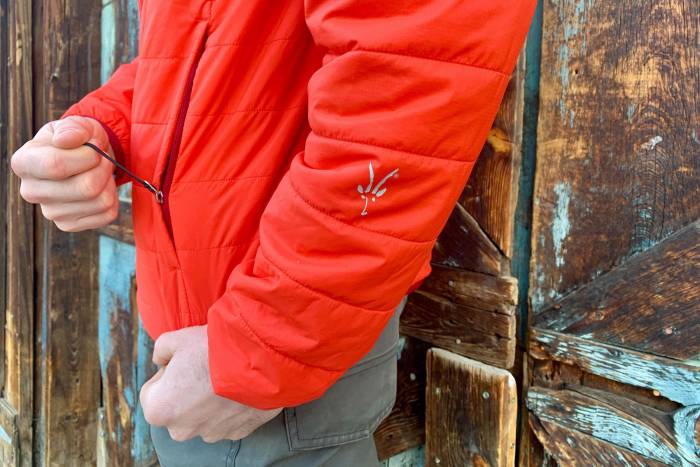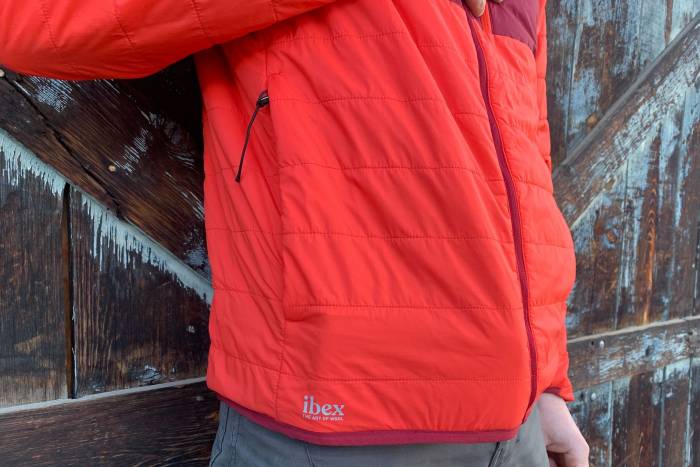The Best Midlayers of 2025
- Best Overall Midlayer: Patagonia R1 Thermal Full-Zip Hoody
- Best Budget Midlayer: REI Co-op Flash Hyperstretch Fleece Jacket
- Most Breathable High-Output Midlayer: The North Face FUTUREFLEECE Full-Zip Hoodie
- Best Synthetic Puffy Midlayer: Arc’teryx Proton Hoody
- Another Solid Fleece for Warm Weather: Patagonia R1 Air Hoody
- Best Midlayer Vest: The North Face ThermoBall Eco Vest
- Best Alternative Insulation Midlayer: Ibex Wool Aire Hoodie
- Style: Fleece
- Material: 6.5 oz. 91% recycled polyester/9% spandex flat-faced Technostretch fleece
- Insulation: N/A, grid fleece
- Weight: 15.3 oz.
- Pockets: Two
Pros
- Warmest version of the R1 fleece
- Face fabric is smooth and tight-knit, shedding flurries well
- Microgrid fleece is warm and plush
- Nice snug hood
- Wide size range
Cons
- Not the most breathable option for high-output activities
- A bit heavy for a fleece
- Pricier than normal R1 fleece
- Weight: 11 oz.
- Fit: Athletic
- Fabric: 54% recycled polyester, 35% nylon, 11% spandex
- Density: Light to Midweight
- Special features: Zippered hand pockets, drawcord hem
Pros
- Stretchy
- Slightly longer length with drawcord hem
- Affordable
- Hood stays on while running
Cons
- No thumbholes
- Style: Fleece hoodie
- Material: 124 g/m² Teijin Octa FUTUREFLEECE — 55% polyester, 45% recycled polyester
- Insulation: N/A, fleece
- Weight: 6.2 oz.
- Pockets: One
Pros
- Octa fleece is highly breathable, but holds warmth well when under a layer
- Extremely lightweight
- Versatile layering option
- Stretchy material is easy to move in
Cons
- Not enough pockets
- No wind resistance
- Thumb loops are a little fragile
- Style: Synthetic hoody
- Material: Fortius Air 20 face fabric; 20D Toray liner
- Insulation: PrimaLoft Gold 80 gsm torso, 60 gsm hood
- Weight: 14.6 oz.
- Pockets: Three
Pros
- Exterior is highly abrasion-resistant
- PrimaLoft Gold is high-quality insulator, and is body mapped with different weights used in torso/arms
- Hand-warming pockets are placed higher to avoid climbing harnesses
- Helmet-compatible hood
Cons
- Has an upper limit for breathability
- Expensive
- No thumb loops
- Weight: 12.9 oz. (men’s size M); 10.9 oz. (women’s size S)
- Fit: Athletic
- Fabric: 100% recycled polyester fleece
- Density: N/A
- Weather Resistance: No weather treatment
- Pockets: Two handwarming, one on chest
Pros
- Super breathable zig-zag grid fleece
- Lightweight
- Wide range of sizes
- Cozy on-skin feel with snug fit
Cons
- Not very much static warmth
- Wind resistance isn't great
- No thumb loops
- Style: Full-zip vest
- Material: 100% recycled nylon
- Insulation: 11 g/ft. recycled polyester ThermoBall Eco
- Weight: 14.6 oz.
- Pockets: Two
Pros
- Highly packable
- Synthetic fill will still insulate when wet
- 100% recycled insulation and face fabrics
- Stuffs into its own pocket
Cons
- A little heavy for a vest
- Not as warm as a true down vest
- A bit pricey
- Style: Synthetic hoodie
- Material: 20D nylon face fabric
- Insulation: 80 gsm merino wool
- Weight: 11.3 oz.
- Pockets: Three
Pros
- Surprisingly warm for the thickness
- Breathable
- Well-fitted hood
- Great for layering
Cons
- A few ounces heavy for the price
- Zipper feels undersized for the jacket
Other Midlayers We’ve Worn and Enjoyed
- Style: Puffy jacket
- Material: 100% recycled polyester with DWR
- Insulation: 60 g PrimaLoft Gold Eco
- Weight: 11.9 oz.
- Pockets: 3
Pros
- Stylish design looks good in the mountains and around town
- Highly compressible given how warm it is
- Slippery fabric makes layering easy
Cons
- Extensive stitching adds some breathability but also allows rain to soak insulation faster
- A little heavier than similar lightweight layers
- Loose-fitting cuffs often let some heat escape
- Style: Grid fleece
- Material: Polartec Power Grid 93% recycled polyester, 7% spandex (197 gsm)
- Insulation: N/A,fleece
- Weight: 11 oz.
- Pockets: One on chest
Pros
- Great value for the price
- All U.S. made from textile mill to sewing
- Long sleeves don't ride up when reaching overhead
- Offset zipper doesn't nip your chin
Cons
- Chest pocket is a bit awkwardly sized
- Quarter-zip doesn't allow for full venting
- Style: Synthetic hoody
- Material: 40D Delta face fabric; 20D Fortius Air 88% nylon, 12% elastane liner
- Insulation: 40 gsm Coreloft Stretch with Octa fleece side panels
- Weight: 9.9 oz.
- Pockets: Two handwarming pockets
Pros
- Super thin sheet synthetic layer
- Body-mapped insulation puts warmth and breathability where you need it
- More wind-resistant than expected
- PFAS-free DWR finish
Cons
- Fairly pricey
- Little static warmth
- Style: Grid fleece hoody
- Material: 20D stretch woven nylon shell, VerticalX Octa insulation
- Insulation: N/A, grid fleece
- Weight: 12.5 oz.
- Pockets: Three
Pros
- High-cardio coverage
- Versatile temperature range
- Extended off-season use
- Enhanced durability in softshell covered areas
Cons
- Learning curve for layering underneath
- Drafty in tailwinds
- Style: Synthetic hoody
- Material: 20-denier Pertex Quantum Air
- Insulation: 83 gsm Vapor Rise Warm lining
- Weight: 12.4 oz.
- Pockets: 3
Pros
- Super-versatile midlayer
- PFAS-free DWR waterproofing
- Highly breathable
- Harness- and helmet-compatible
- Multiple pockets
- One-hand hem adjustment
Cons
- Limited sizing and colors
- Style: Fleece hoodie
- Material: Polartec Alpha grid fleece
- Insulation: N/A, grid fleece
- Weight: 8.6 oz.
- Pockets: 3
Pros
- Dual fleece design combines warmth and stretch where you need it
- Lightweight
- High hand-warming pockets tuck out of way of harness or pack straps
Cons
- Trim fit might not be for everyone
- Bit too warm for high-paced activities
- Style: Full-zip vest
- Material: Recycled polyamide and elastane
- Insulation: G-loft insulation
- Weight: Unavailable
- Pockets: Two
Pros
- Very compact packed size
- Pertex shell fabric is durable
- Adjustable hem
- Reflective details
Cons
- Not quite as warm as some vests
- Style: Button-up
- Material: Varies; 30-denier nylon with DWR or 50-denier polyester with DWR
- Insulation: 60 g. synthetic down
- Pockets: 4 snap pockets
- Weight: 12-15 oz.
Pros
- Stylish midlayer that can be worn to the office or trail
- Four pockets that close with snaps
- Many color ways available
Cons
- A bit spendy
- Sizing isn't the most accommodating — some may want to size up
- Not the best option for outdoors activities
Midlayer Comparison Chart
| Midlayer | Price | Material | Insulation | Weight | Pockets |
|---|---|---|---|---|---|
| Patagonia R1 Thermal | $219 | 6.5 oz. 91% recycled polyester/9% spandex flat-faced Technostretch fleece | N/A, grid fleece | 15.3 oz. | Two |
| REI Co-op Flash Hyperstretch | $100 | 54% recycled polyester/35% nylon/11% spandex | N/A, grid fleece | 11 oz. | Two |
| The North Face FUTUREFLEECE | $170 | 124 gsm Octayarn — 55% polyester, 45% recycled polyester | N/A, grid fleece | 6.2 oz. | One |
| Arc’teryx Proton Hoody | $350 | Fortius Air 20 face fabric; 20D Toray liner | PrimaLoft Gold 80 gsm torso, 60 gsm hood | 14.6 oz. | Three |
| Patagonia R1 Air Hoody | $179 | 100% recycled polyester fleece | N/A, grid fleece | 12.9 oz. | Three |
| The North Face ThermoBall Eco Vest 2.0 | $180 | 100% recycled nylon | 11 g/ft. recycled polyester ThermoBall Eco | 14.6 oz. | Two |
| Ibex Wool Aire Hoodie | $285 | 20D nylon face fabric | 80 gsm merino wool | 11.3 oz. | Three |
| Patagonia Nano Puff | $229 | 100% recycled polyester with DWR | 60 gsm PrimaLoft Gold Eco | 11.9 oz. | Three |
| NW Alpine Black Spider Hoody | $135 | Polartec Power Grid 93% recycled polyester, 7% spandex | N/A, grid fleece | 11 oz. | One |
| Arc’teryx Atom SL Hoody | $280 | 40D Delta face fabric; 20D Fortius Air 88% nylon, 12% elastane liner | 40 gsm Coreloft Stretch with Octa fleece side panels | 9.9 oz. | Two |
| Outdoor Research Deviator Hoodie | $229 | 20D stretch woven nylon shell, VerticalX Octa insulation | N/A, grid fleece | 12.5 oz. | Three |
| Rab VaporRise Summit Jacket | $220 | 20-denier Pertex Quantum Air with DWR | 83 gsm Vapor Rise Warm lining | 12.4 oz. | Three |
| Norrøna Falketind Alpha120 | $219 | 120 gsm Polartec Alpha grid fleece | N/A, grid fleece | 8.6 oz. | Three |
| Odlo S-Thermic Vest | $180 | Recycled polyamide and elastane | G-loft insulation | N/A | Two |
| Stio Skycrest Insulated Snap Shirt | $189 | Varies; 30-denier nylon with DWR or 50-denier polyester with DWR | 60 gsm synthetic down | 12-15 oz. | Four |

How We Tested the Best Midlayers
Our Expert Testers

Our Testing Process and Testing Grounds

Buyer’s Guide: How to Choose a Midlayer
Which Midlayer Is Best: Jacket or Vest?
Midlayer Insulation

Price & Value
Budget
Mid-Tier
Premium

Frequently Asked Questions
You can think of a good midlayer like the Goldilocks of jackets: not too small, not too big, not too bulky, not too thin — just right in terms of fit, versatility and, above all, warmth.
Other components that make a midlayer like the ones on our list stand out from the rest include insulated hoods, zippered pockets with good placement, adjustable hems, and compatibility with other layers.
The warmest midlayers on this list in terms of insulation were the Arc’teryx Proton Hoody and the Patagonia Nano Puff. Our other favorite midlayer that offers lots of warmth is the Ibex Wool Aire Hoodie.
The best midlayers, in our opinion, are the ones with added insulation and other features that make it easy and comfortable to layer. This tends to be a synthetic fill insulation, sewn into baffles or in between two layers of fabric to provide that insulation.
Depending on the style and what activities you’ll be using the midlayer for, materials like fleece or PrimaLoft synthetic insulation are always great choices.
In testing, we found the most popular midlayers among GearJunkie staff were full-zip and hoodie styles.
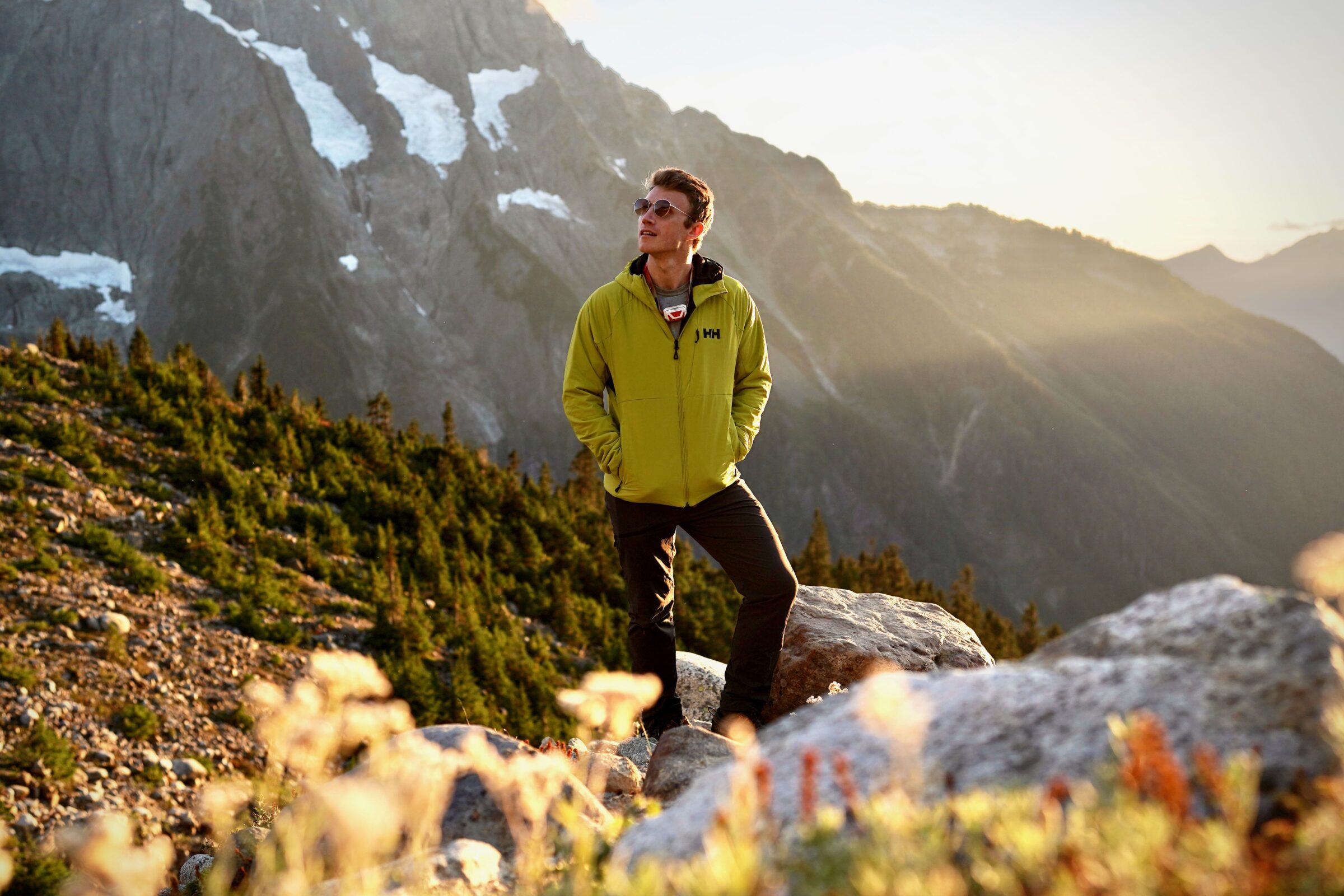
The Best Synthetic Insulated Jackets of 2025
We tested the best synthetic insulated jackets from Arc’teryx, The North Face, Patagonia, and more to help you find the best option for your needs and budget.

The Best Down Jackets of 2025
We tested the best down jackets on the market from Arc’teryx, Patagonia, Rab, Mountain Hardwear, and more to help you find the best jacket for your needs and budget.





























